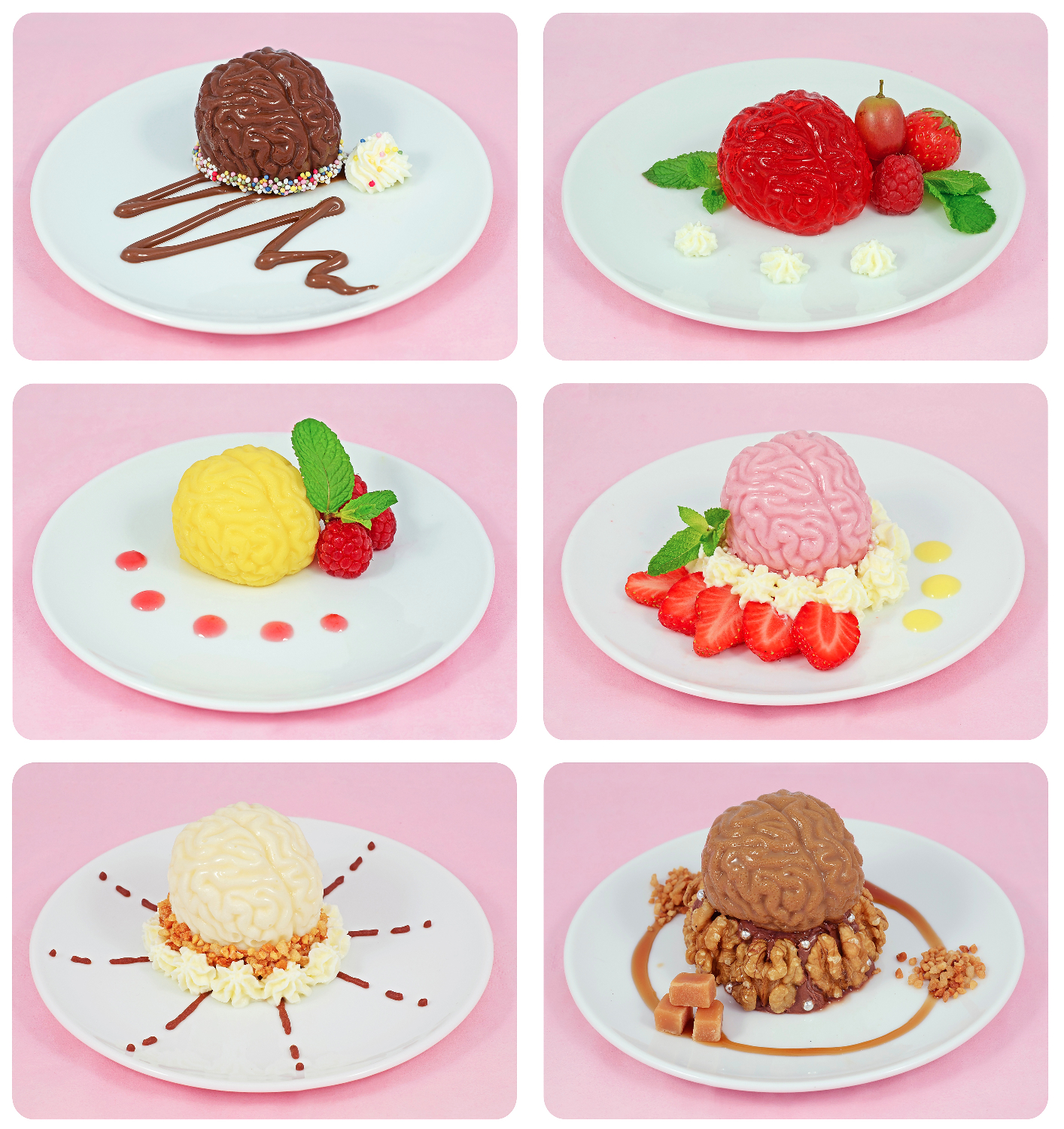The proof of the pudding is in the brain – a standardized brain-shaped food stimuli set for fMRI
Material: A photo series with edible sculptures made of pudding and chocolate (each photo is A4-shaped, if convenient I can sent separate files)
Motivation: Are your striatal neurons firing like crazy by the sight of these deliciously sweet desserts? Or does your insula overrule this response, disgusted by the thought of eating a human brain? It is only until approximately 8 years old that the appearance of our foods starts to matter, children younger than that won’t hesitate a second to eat insect- or poo-shaped candies. So, don't let your brain be fooled by the shape of these tempting treats!
On a more serious note: it’s now well-known that what you eat influences your brain's health. Some scientists even take it further and attribute the relatively large size of our human brain and its strongly developed cognitive abilities to the invention of cooking (by making energy from food more readily available to support our brain). Maybe not entirely coincidental, it is that same brain who determines what you eat every day: how your brain responds to viewing, tasting and smelling food is strongly related to your preferences, eating behaviour and even your body weight. Although Nutritional Neuroscience never had a dedicated oral session at HBM (yet!), its relevance is recognized by more and more researchers: the amount of posters this year almost hit 20!
The Nutritional Neuroscience Lab also offers a standardized picture set with more than 200 normal food pictures.

